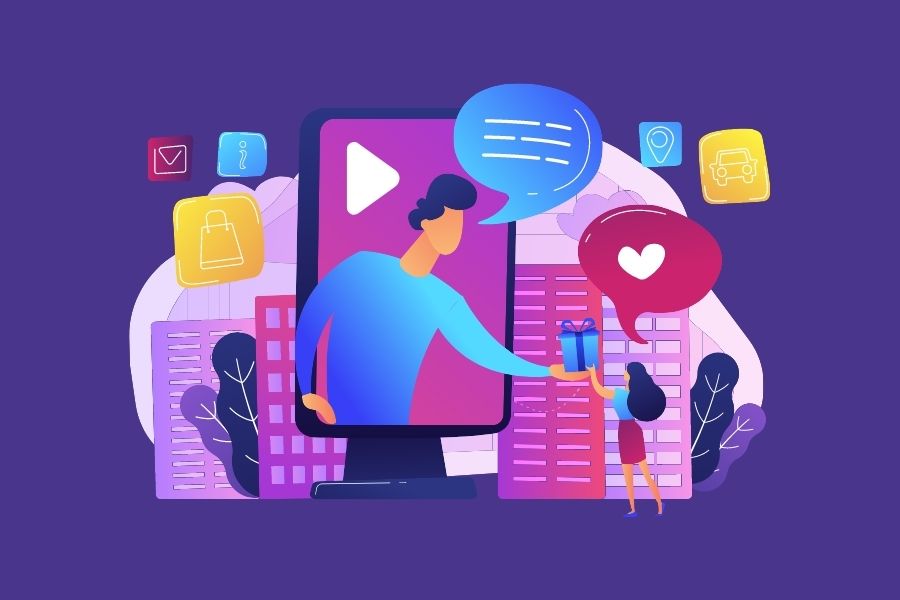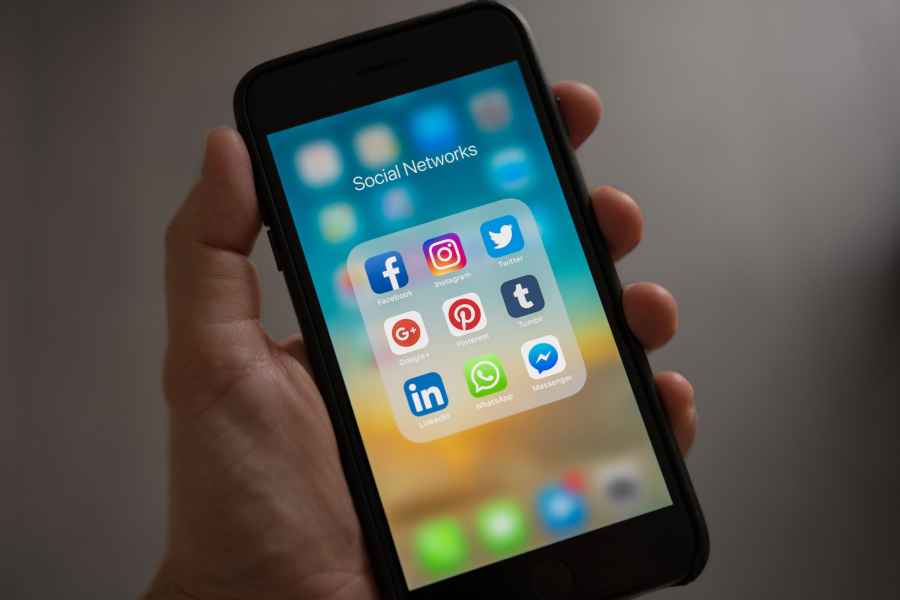Ever wondered what interactive marketing really is, or how it can catapult your business growth?
You’re not alone.
Interactive marketing is a dynamic, two-way approach to customer engagement that is revolutionizing the way businesses connect with their audience.
In this guide, we’ll define interactive marketing is, and share several actionable techniques that can help you use it to drive your business growth.
From email marketing to personalized content, these strategies are game-changers. Excited to explore this powerful marketing tool?
Let’s do this!

What is Interactive Marketing?
Interactive marketing, as its name suggests, focuses on interaction.
Think of it as a dance where your customer leads. Your steps — your marketing messages — adapt based on the customer’s moves. You respond to their actions, interests, and behavior in real-time.
That’s why interactive marketing is so effective: it’s customer-centric. It makes customers active participants, not passive listeners.
The payoff?
Better engagement, enhanced customer loyalty, and higher conversion rates.
Ever received a recommendation from Netflix for a new binge-worthy show? That’s interactive marketing.
Netflix tracks your watching habits, understands what makes you tick, and then suggests shows you’re likely to enjoy. You watch more, Netflix gets to hold onto a loyal customer. It’s a win-win!
Or consider those personalized emails from your favorite online store, recommending products based on your browsing history. That’s interactive marketing again, making you feel seen and valued as a customer. It’s like having your own personal shopper!
The beauty of interactive marketing is that it shifts the power balance.
Instead of throwing a sales pitch at your customers, hoping it will hit the target, you engage them in a tennis match. You serve an idea, they return it with their reaction, and you keep the rally going based on their feedback.
But what’s in it for you as a business?
Well, besides making your customers feel more connected and valued (which, trust me, they’ll appreciate), interactive marketing allows you to gather invaluable insights into their preferences.
This can help you fine-tune your marketing strategy, offer better products or services, and ultimately drive growth.
Imagine running a restaurant and being able to predict exactly what each diner wants to eat. That’s the level of customization and precision interactive marketing can provide.
Your customers get a meal they love, you get a loyal customer who’s likely to recommend you to their friends. That’s the magic of interactive marketing in action!
Unraveling the Key Types of Interactive Marketing Campaigns

Interactive marketing wears many hats, each unique in its way. Let’s take a look at each, and discover what makes each type tick…
Email Marketing
Email marketing is the digital equivalent of sending a handwritten letter to a friend. It’s personalized, it’s direct, and when done right, it can make the recipient feel valued and understood.
The real power of email marketing comes into play when it’s tailored to individual customers.
Let’s say you own an online clothing store. One of your customers recently visited, looked at a few dresses, but didn’t make a purchase. Later that day, she receives a personalized email showcasing similar dresses with a special discount just for her.
Voila!
You’ve not only addressed her unique needs but also incentivized her to make a purchase. It’s like delivering a personalized invitation to an exclusive event, making your customer feel special.
The trick with email marketing is to remember that people are inundated with emails daily, so it’s crucial to ensure yours stands out.
Personalize the subject line, offer value upfront, and maintain a conversational tone. This way, your email becomes less of a sales pitch and more of a friendly chat.
Livestreaming
Ever tuned into a behind-the-scenes live stream from your favorite brand or a podcast featuring thought leaders in your field?
If so, you’ve experienced the magic of real-time interaction.
Live streams offer a unique opportunity to create a more intimate and authentic connection with your audience. They get to see the human side of your brand, ask questions, and receive immediate responses.
Think about it as hosting a live event for your customers, no matter where they are in the world. It’s a front-row seat to your brand’s performance!
And remember: The key to a successful live stream is to provide valuable content, encourage participation, and engage in real-time dialogue.
This way, you can create an immersive experience that leaves your audience eagerly awaiting the next live event.
Interactive Storytelling & Personalized Content

Who doesn’t love a good story? We’re wired to respond to narratives, and interactive storytelling leverages this to create compelling marketing experiences.
Interactive storytelling is like giving your audience a “choose your own adventure” book.
For instance, let’s say you’re a travel agency trying to promote exotic holiday packages. Instead of a generic promotional video, create an interactive video where viewers can choose their adventure.
When you let your audience control their journey. They’re more likely to remember the unique adventure they crafted, increasing the likelihood they’ll book that dream holiday.
Calculators, Polls, Surveys, & Quizzes
Let’s face it, we’ve all spent a bit too much time on a buzz-worthy quiz or used an online calculator to estimate our tax returns or monthly mortgage payments.
Not only do these interactive tools make otherwise mundane tasks engaging, but they also provide a goldmine of customer insights.
Think of it as playing a fun game with your audience.
For instance, a skincare brand could create a personalized skincare regimen quiz. As customers navigate through the quiz, they share valuable information about their skin type, concerns, and preferences. Simultaneously, they receive a tailored skincare regimen that feels uniquely theirs.
It’s like getting advice from a trusted friend who knows their skin inside out.
As a bonus, these interactive tools allow you to segment your audience better and provide more personalized content.
Remember, the more you know about your audience, the better you can cater to their needs.
Contests & Giveaways
Contests and giveaways are the universal language of excitement — who doesn’t love the prospect of winning something?
Imagine you’re a fitness brand launching a new product. You could run a contest where your customers share their fitness journeys in exchange for a chance to win your new product.
This not only generates buzz around the launch, but also cultivates a sense of community. Participants are excited about the possibility of winning, and even if they don’t, they’re engaged and more connected with your brand.
The beauty of contests and giveaways is that they can be as simple or as elaborate as you’d like.
From sharing a post on social media to creating a user-generated content campaign, the possibilities are endless. Just make sure the prize is something your audience truly desires, and the rules are clear and straightforward.
Remember, in the grand scheme of interactive marketing, your aim is to make your audience the co-creator of their experiences with your brand.
5 Top Tips For Driving Growth with Interactive Marketing

Harness the power of interactive marketing to its fullest potential with these best practice strategies.
Learn to drive business growth, engage your audience more deeply, and stay ahead of the curve in the ever-evolving digital marketing landscape!
1. Segment Your Market for Better Targeting
Imagine trying to strike a conversation with a crowd where everyone speaks a different language.
Challenging, right?
That’s where market segmentation comes in, helping you tailor your message to each audience segment. It’s like learning different dialects to communicate effectively.
2. Use Interactive Elements in Email Marketing
Now, let’s not forget about email marketing. Adding interactive elements like quizzes, surveys, or clickable infographics can significantly increase engagement in your emails.
It’s like adding pop-up illustrations in a book — they make the content more engaging, memorable, and fun!
3. Incorporate User-Generated Content
And lastly, don’t underestimate the power of user-generated content.
Encouraging your audience to contribute content, like reviews, photos, or even blog posts, can boost engagement and foster a strong sense of community.
It’s like having a potluck dinner where everyone brings a dish to share.
Plus, it provides authentic and relatable content for others in your community to engage with.
4. Leverage Technology for Effective Interactive Marketing

Tech tools aren’t just fancy add-ons, they can help you segment your audience, automate responses, and analyze results.
Consider mobile optimization, in particular.
More and more people are accessing the internet on their phones, and if your content doesn’t perform well on these smaller screens, you risk losing a significant chunk of your audience.
Mobile optimization is like tailoring a suit — it ensures your content fits perfectly on every screen, providing a smooth and engaging user experience.
5. Measure Your Results
How do you know if your interactive marketing efforts are paying off? Metrics!
They’re like your GPS, guiding you to understand what’s working and what needs tweaking.
Consider engagement rates, conversion rates, and bounce rates. Together, these three metrics show you how well your content is or isn’t appealing or relevant to your audience, helping you to optimize your marketing strategies.
Wrapping Up Interactive Marketing
Feeling overwhelmed? We get it — exploring new marketing horizons can feel like a mammoth task.
But remember, every expert was once a beginner, and with these interactive marketing strategies under your belt, you’re well on your way to becoming a pro.
This powerful approach will help you drive business growth, foster meaningful relationships, and stay ahead of the curve.
So why hesitate? Get out there and make some marketing magic!
The post What is Interactive Marketing? 5 Top Tips to Drive Growth (2023) appeared first on Smart Blogger.

No comments:
Post a Comment